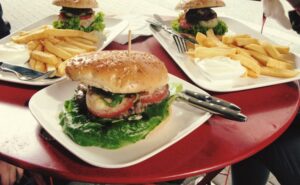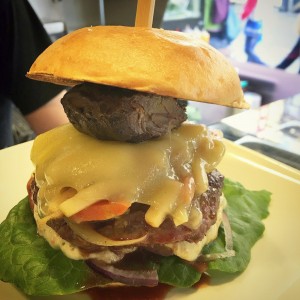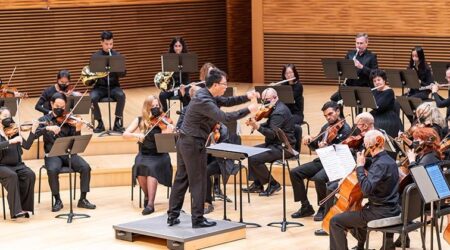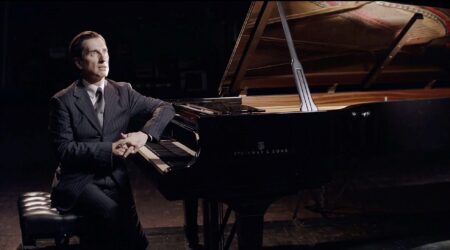Cologne’s Burger Boom
The time eventually comes when an American expat is in absolute need of comfort food. When I lived in the States, I took most typical American comfort foods such as burgers, cheesecake, and Mac ‘n Cheese for granted. It was only once I lived in Europe, where these foods either didn’t exist, or were few and far between, […]
The time eventually comes when an American expat is in absolute need of comfort food. When I lived in the States, I took most typical American comfort foods such as burgers, cheesecake, and Mac ‘n Cheese for granted. It was only once I lived in Europe, where these foods either didn’t exist, or were few and far between, that I craved them. Sadly, the few places where I thought I struck gold only ended in severe disappointment due to the poor quality and misinterpretation of the food.

France is the worst European country when it comes to imitating American – or any other comfort food. Their proud and closed-off culture prohibits them from such dalliances with foreign food. It didn’t take me long, however, to notice that the Germans were a bit more fearless in their food adventures. This is for two reasons: they are not ashamed to admit that they enjoy eating comfort food and they are a business-minded culture that has realized that people are more willing to pay for something new and exotic when eating out.
I didn’t have to look very far before I found what I was looking for in Cologne: two of the most famous burger restaurants in Germany – Freddy Schilling and Die Fette Kuh, or ‘’The Fat Cow.’’ These two competing burger restaurants have won the hearts of Cologne inhabitants when they both opened about the same time five years ago. Since I have close connections with both restaurants (begrudgingly on their parts, I might add) it was only a matter of time before I sampled burgers from both.
I’m aware that the origin of the hamburger is a bit obscure, however it is true that for as long as I’ve been alive, the concept of what a hamburger is has been associated with Americans. That being pointed out, I expected nothing short of typical American-style burgers upon my first visit. True enough, they are burgers and there is only so far one can stray from the concept, but something was immediately different about these burgers. The burgers weren’t the only thing different, though – from the prices all the way to the employees and customers, the restaurants and their menus maintained a German-like atmosphere, despite efforts to achieve anything else.
Freddy Schilling, which has two locations in Cologne, offers seven regular burgers and an Action Burger, roughly every month or so. In addition, they offer several sauces, French fries, and a couple variations of sauerkraut. Their prices range from as little as six Euros to eleven Euros for a burger. Die Fette Kuh on the other hand, is more complex – offering fourteen burgers regularly in addition to a new limited burger every week. Die Fette Kuh is also more expensive due to fresher ingredients and their gourmet burgers of the week. Customers can expect to pay as much fifteen Euros. They offer a new salad every month in addition to everyday salads, French fries, and yes, even chili fries. Both locations offer vegetarian options and Freddy Schilling even offers gluten-free burgers. Both restaurants cook their patties on a coal-fueled grill which contributes largely to the taste and their popularity.

Die Fette Kuh and Freddy Schilling maintain friendly, down-to-earth décors that make German customers feel that it’s all right to eat a burger in the middle of the day – and on a Wednesday to boot! Since this is Germany, burgers are cooked to a medium consistency by default, which may be off-putting to American customers. I’ve learned to just roll with that one. Due to the overwhelming amount of customers that both restaurants serve, it is easier for the cooks to produce each burger faster when cooked medium or medium-well. With only one cook on the grill at a time and four- to eight-hundred customers daily, an American-approved well-done burger simply takes too long to cook.
Due to the large number of customers, the wait time can be as much as thirty to forty minutes. Then, when your order is finally ready, there is a slim chance that you’ll find a place to sit down and eat it. These restaurants were not opened with this level of demand in mind; on average both are only able to seat about 35 customers at a time. When you do manage to find a seat, expect to be very familiar with those sitting next to you because the concept of personal space no longer exists once you cross the threshold.
These restaurants both have a unique style of service that meets somewhere in the middle of fast-food style service and an average sit-down restaurant. Freddy Schilling has one to two waiters responsible for supplying customers with their food. This is no easy feat, because these waiters are not equipped with large serving platters, not to mention the lack of space to maneuver through the crowd. They are responsible first for checking that the cooks in the kitchen didn’t make any mistakes, then to somehow carry up to six heavy plates in both hands while calling out the customer’s name over the loud crowd of waiting customers. Space is limited for both servers and guests, which makes bringing even a small order to a nearby table difficult. Surprisingly, there are few accidents.

Die Fette Kuh operates with a similar serving system except that they do not have waiters or waitresses. Instead they have servers or runners who are responsible for collecting and clearing dirty dishes, restocking napkins, silverware, and the drink cooler. On a busy day, that is not an easy task. They are expected to do a lot in a small amount of time, maneuvering between customers who simply do not want to move. After an order is complete, one of the cooks from the kitchen yells out the name indicated on the order receipt and the customers are responsible for coming forward and collecting their own food.
The food quality, however, seems worth all of these inconveniences for the Germans. I have to admit that these burgers are good, but definitely German. By that I mean some of the combinations are a little plain, or the burgers lack in sauce, making them dry and hard to eat. With the exception of one or two burgers on each menu, each one is put together in a way that makes it impossible to eat with your hands. This goes unnoticed by German customers who do not think twice about eating just about everything with a fork and knife, including tacos, pizza, sandwiches, and especially burgers. This stems from cultural differences. Germans view burgers as something sexy, exotic, and even taboo, whereas Americans see them as casual, quick, and common. Germans are so constrained by a conservative food culture that they are ashamed to admit that they like burgers, let alone eat them in public. They diffuse this shame by turning a casual, even blue collar dish such as a burger into something that is acceptable.
They achieve this goal of making burgers socially acceptable in a few ways: one way is the quality of the ingredients, which drives the price up to a point that many Americans wouldn’t be willing to pay for something so common. Die Fette Kuh, for example, actually grinds and presses their beef patties daily. They also close the restaurant once a week, dedicating an entire day to the production of freshly made chili, sauces, and other important products on their menu. Another way they create this allure of burgers is the type of burgers offered. Die Fette Kuh as mentioned earlier, cranks out some interesting combinations, such as burgers consisting of freshly-made duck and kimchi or burgers made of pig cheek. Lastly, they make it acceptable by eating it in a proper manner with a fork and a knife. This takes longer and detracts from the overall taste, as the burger is consumed in sections rather than all together, but it seems to satisfy them.
The customers’ behavior is evidence enough that these restaurants are doing a good job. I was surprised to see how normal people were so quickly transformed into burger zombies once the fumes hit their nostrils. They start pacing around the front doors as early as an hour before opening time, often forming a line that seems to have no end. Their eyes are wide, and if I’m being honest their bodies seem to shake a little in the anticipation. Once inside, they start the process of staring down customers who are currently seated and eating, in attempts to intimidate them into eating faster and freeing their tables. Once someone seated so much as grabs for his coat or her purse, elbows are flying and pupils dilate as standing customers narrow in on their goal: securing a seat at all costs.
Cologne has caught the burger fever that has long possessed the States. For the last six years, two main restaurants have been competing not only to be Cologne’s best burger restaurant, but the best in Germany. At the moment, sales figures and customer’s reviews indicate that Die Fette Kuh currently holds that title due to better variety, quality, and overall creativity. The restaurants may be small, overcrowded, and have long wait times, but that doesn’t stop hundreds of customers from all over Germany visiting them every day.
Photos by Jacqueline Perrier-Gillette
Jacqueline Perrier-Gillette is currently a resident of Paris, France, where she lives with her husband. Together the two of them operate their small translation company, giving Jacqueline the opportunity to observe the French and their culture up close. She is an avid reader, writer, and student of foreign languages.
By Jacqueline Perrier-Gillette





